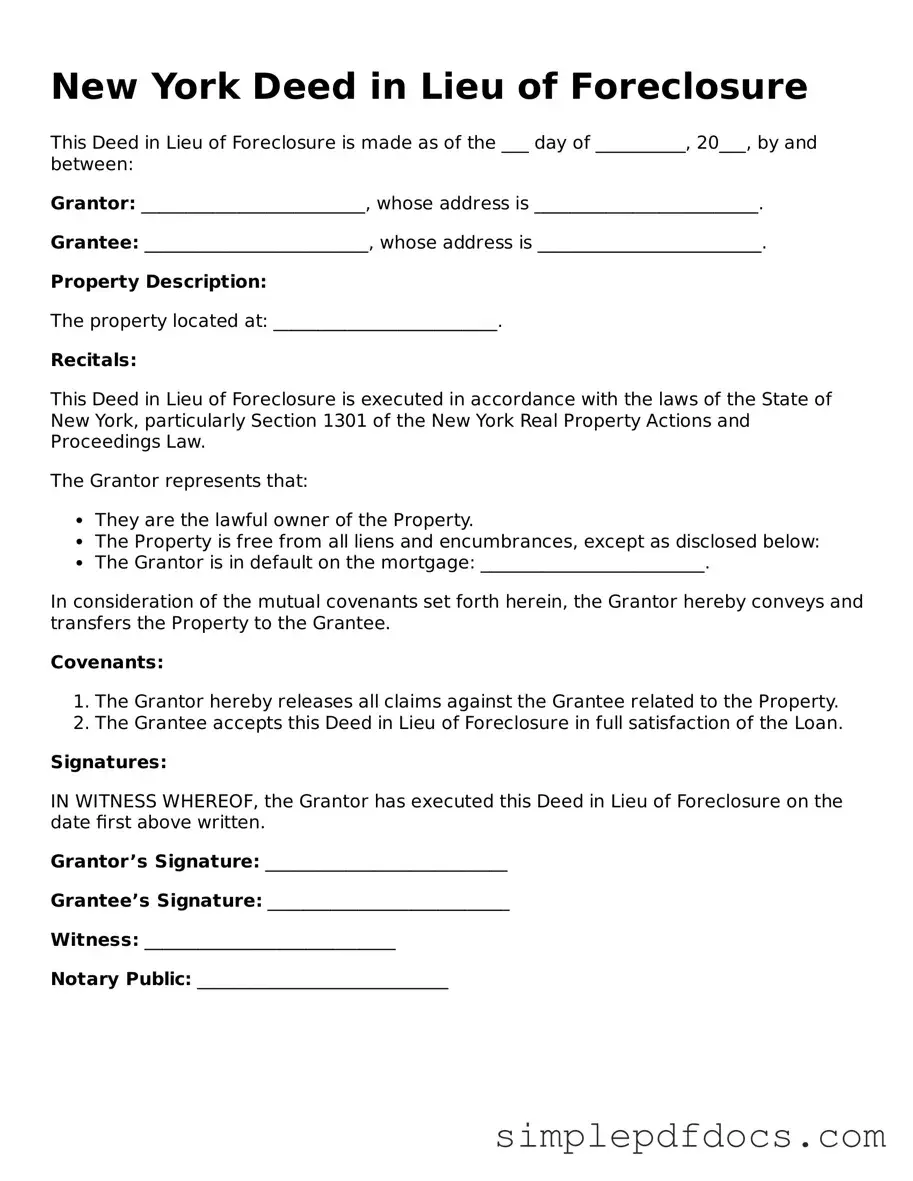In the bustling landscape of real estate and homeownership, the Deed in Lieu of Foreclosure offers a unique alternative for homeowners facing financial difficulties. This legal tool allows a homeowner to voluntarily transfer ownership of their property back to the lender, effectively sidestepping the lengthy and often stressful foreclosure process. By choosing this route, individuals can mitigate the negative impacts on their credit score and regain some control over their financial situation. The Deed in Lieu of Foreclosure form captures essential details, including the property description, the parties involved, and any relevant encumbrances. It’s crucial for homeowners to understand the implications of this decision, as it not only affects their current housing situation but also their future ability to secure financing. This process can be beneficial for both the homeowner and the lender, as it can lead to a quicker resolution and potentially lower costs associated with foreclosure. As you navigate this option, it’s important to consider the specific requirements and potential consequences outlined in the form, ensuring that you make an informed choice that aligns with your financial goals.
